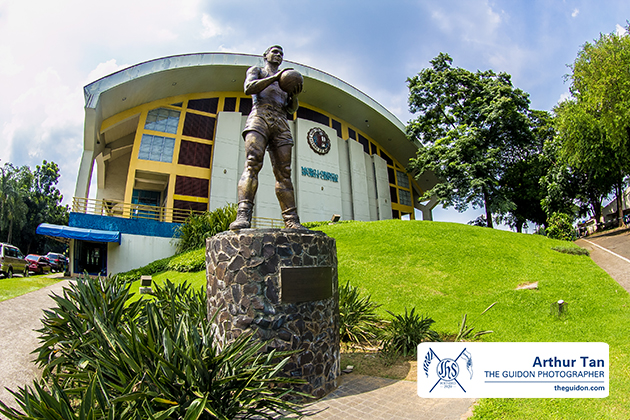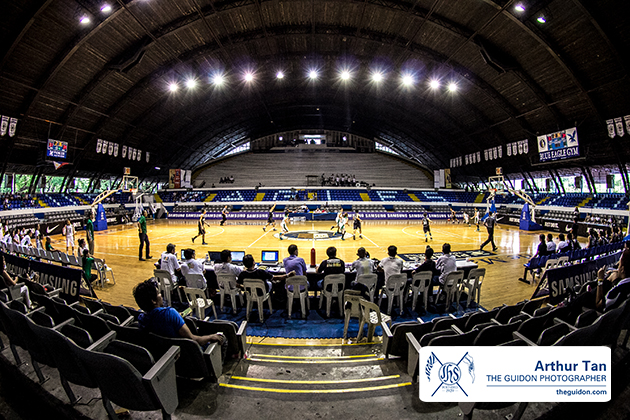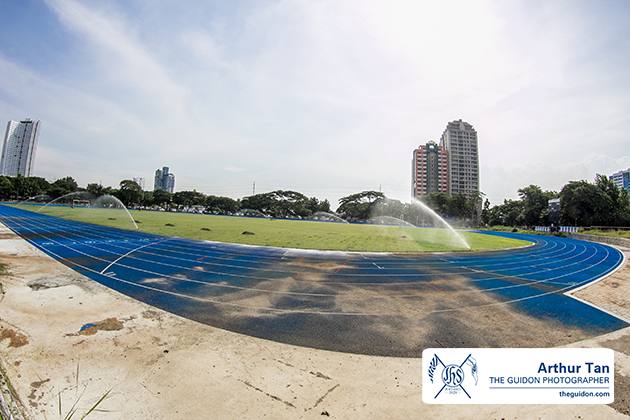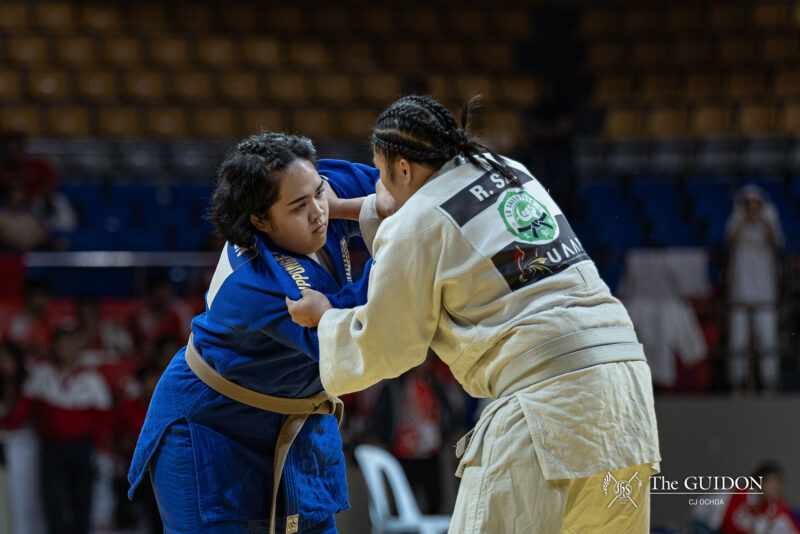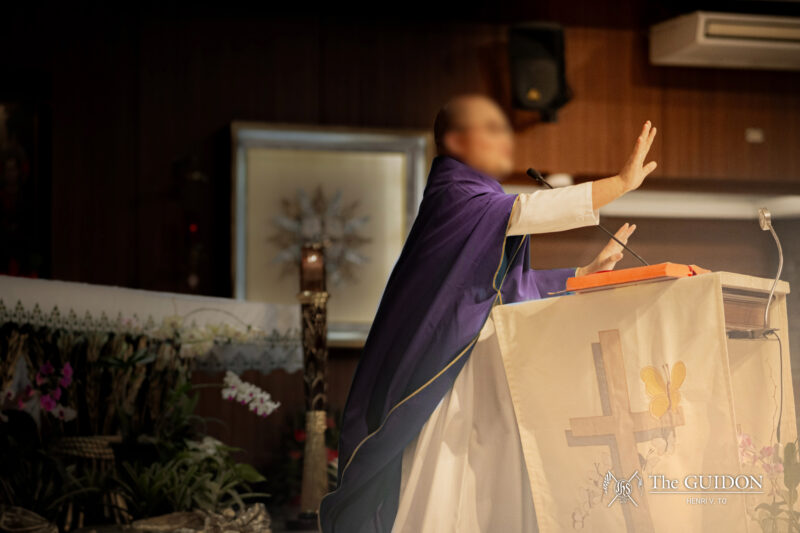THE HARD work that athletes put into preparing for each season is witnessed not only by their teammates and coaches, but their home bases as well. Over the years, their training venues have played a big role in preparing the players for what awaits them in their respective battlegrounds.
With the increasing demand for rigorous training preparations, a need also arises for new equipment and proper venues that aid teams’ progress. The GUIDON Sports takes a look at how the Ateneo is faring in terms of its facilities.
Eagles’ nest
On December 3, 1949, the first ever structure in the Loyola Heights campus was officially unveiled: The Blue Eagle Gym (BEG).
Measuring 213 feet wide and 281 feet long, the BEG is currently home to indoor sports such as chess, judo, fencing, table tennis and volleyball. It also houses quality equipment such as a batting cage and eight Olympic-standard table tennis tables.
The BEG’s central feature, however, is the basketball court and the surrounding bleachers that boast a seating capacity of 7,500. Once used in a pre-season NBA game in Japan, the court was shipped to the Philippines by Pioneer Insurance.
Fifty-one years after the BEG’s construction, another sports facility was established—the Moro Lorenzo Sports Complex. Named after Luis Francisco “Moro” Lorenzo, one of Ateneo’s basketball icons of the ‘40s, its establishment enabled the university to address the athletes’ need for more training space.
Aside from accommodating teams such as badminton, basketball and taekwondo, it holds a 200-meter indoor track oval, a weights room, badminton courts and a fully air-conditioned sports medicine clinic.
However, Maria Cristina Samaco, Assistant Director of Marketing of the University Athletics Office (UAO), shares that “Moro is actually not under Ateneo de Manila University. They’re a separate, private entity.”
Another new facility was added to the campus in 2006: The 25-meter Loyola Schools Swimming Pool, a donation of former Blue Tanker Dr. Cecilio Pedro. Today, the pool serves as the training grounds for the Junior Tankers as well as the Blue and Lady Tankers. Prior to its construction, the teams would train in the Ateneo Grade School pool.
“Among other things, the LS Pool gave us a venue conducive for a more high-performance training. It also saved both Juniors, Seniors and Ladies teams travel time to get to training from classes,” says former Blue Tankers Captain Mike Contreras.
Beyond Loyola Heights
Despite the many on-campus facilities of the Ateneo, there are still a few teams that must fulfill their rigorous training regimens outside of Loyola Heights.
One of these varsity teams is the Ateneo Rowing Team (ART), a group that competes internationally but is left out of the University Athletic Association of the Philippines. Composed of around 14 members, the ART usually flies out of the country in October to compete in Varsity Boat Race Malaysia against countries such as the United Kingdom, Hong Kong and Singapore.
“We’re the only remaining Olympic-style rowing team in the country, aside from the national team,” shares ART Team Captain Andrew Tan.
He explains that the relative unpopularity of the sport in the Philippines is a far cry from how it is perceived in universities abroad. The sport’s status in this country affects how the team trains for and fares in global competitions. While foreigners with greater accessibility to training grounds are able to condition themselves twice a day, ART members must content themselves with three to four practice sessions a week at the Manila Boat Club in Sta. Ana, Manila.
Another sport on the list is beach volleyball. While similar to indoor volleyball in many ways, there are several technical aspects that set beach volleyball apart, including the playing field. The lack of sand, the most necessary component of the game, makes it impossible for the team to train on campus.
According to Women’s Beach Volleyball Team Captain Bea Tan, the team trained all the way at the University of the East in Caloocan until they recently transferred to Cantada Sports Center in Taguig.
When asked about the possibility of an outdoor volleyball court, Benjamin Afuang, Coordinator for the College Athletics Office replied, “Yes, we’re considering that, but it’s about having the right location that’s available.”
Home court advantage
One of the varsity teams that no longer needs to train outside campus, however, is the Track and Field Team. The team has found a home in the newly built Ateneo Track Oval (ATO), built around the new Moro Lorenzo Football Field.
The 40 billion-peso project that began construction in August 2011 is said to be the first of its kind in a Philippine university. In terms of size, the football field meets the standards of the International Federation of Association Football, while the track oval complies with the requirements of the International Association of Athletic Federations. The field is also equipped with a weatherproof 5×4-meter electronic scoreboard with LED lights.
A project this massive required the use of world-class materials such as the Bermuda grass, Blue Tartan and the Herculean Spike Resistant Sprint. The project’s construction was also aided by overseas companies like Netforce International Incorporated and the United States-based Trans-lux Corporation.
Men’s Track and Field Team Captain Miko Perez says, “[For] the past six years, we’ve been training without the track oval. We used to go to Rizal [Memorials Sports Complex] then Ultra. There were three main challenges that we always faced: The venue, time and pure athleticism that’s required. Now, we have our own facilities; we’re able to increase training time to improve each one’s build and condition.”
The ATO, however, is still in the process of completion. UAO Assistant Director for Operations Emmanuel Fernandez says, “We’re trying to import equipment in package deals. That’s including the mats, long jumps and high jumps. Hopefully, [we’ll get them] before the year ends.”
With these four major structures standing on the university grounds, many Ateneo athletes gain an advantage when it comes improving and strengthening themselves. At the end of the day, however, these facilities can only go as far as their functions. It is still the athlete who decides whether to retreat or battle his or her way to victory.

